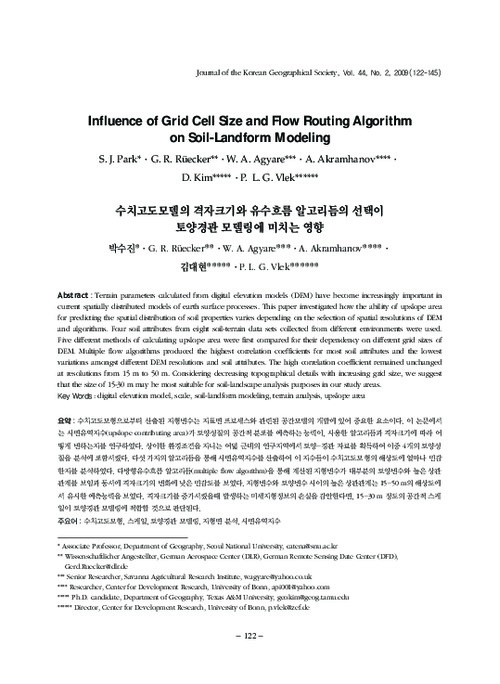Influence of Grid Cell Size and Flow Routing Algorithm on Soil-Landform Modeling
Abstract
Terrain parameters calculated from digital elevation models (DEM) have become increasingly important in
current spatially distributed models of earth surface processes. This paper investigated how the ability of upslope area
for predicting the spatial distribution of soil properties varies depending on the selection of spatial resolutions of DEM
and algorithms. Four soil attributes from eight soil-terrain data sets collected from different environments were used.
Five different methods of calculating upslope area were first compared for their dependency on different grid sizes of
DEM. Multiple flow algorithms produced the highest correlation coefficients for most soil attributes and the lowest
variations amongst different DEM resolutions and soil attributes. The high correlation coefficient remained unchanged
at resolutions from 15 m to 50 m. Considering decreasing topographical details with increasing grid size, we suggest
that the size of 15-30 m may be most suitable for soil-landscape analysis purposes in our study areas

